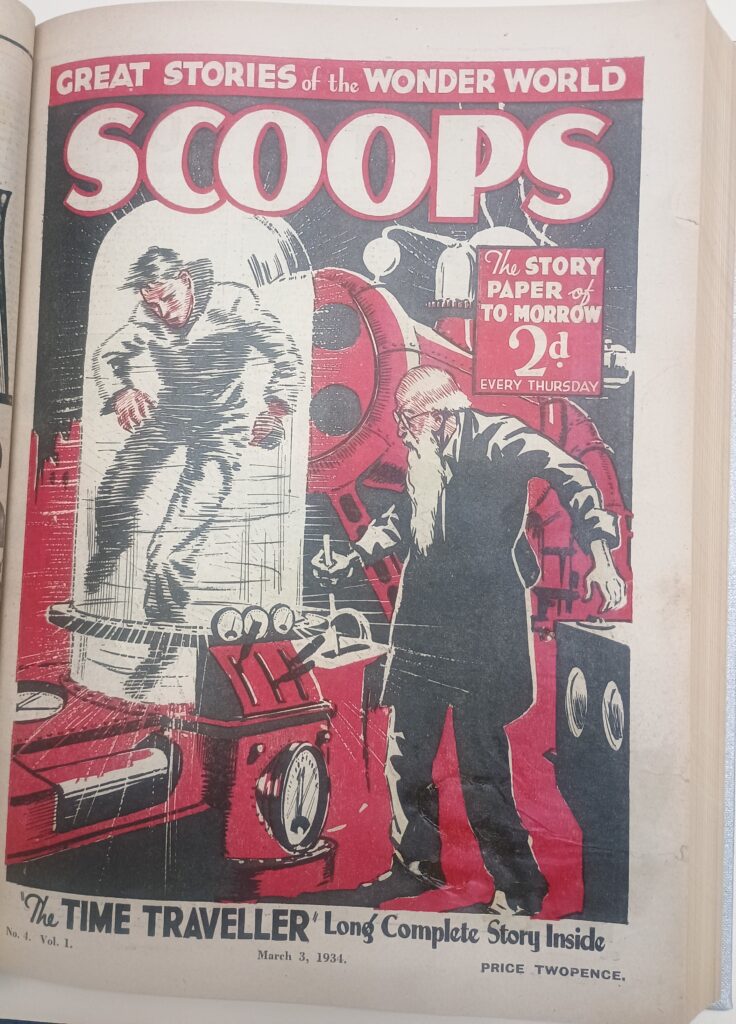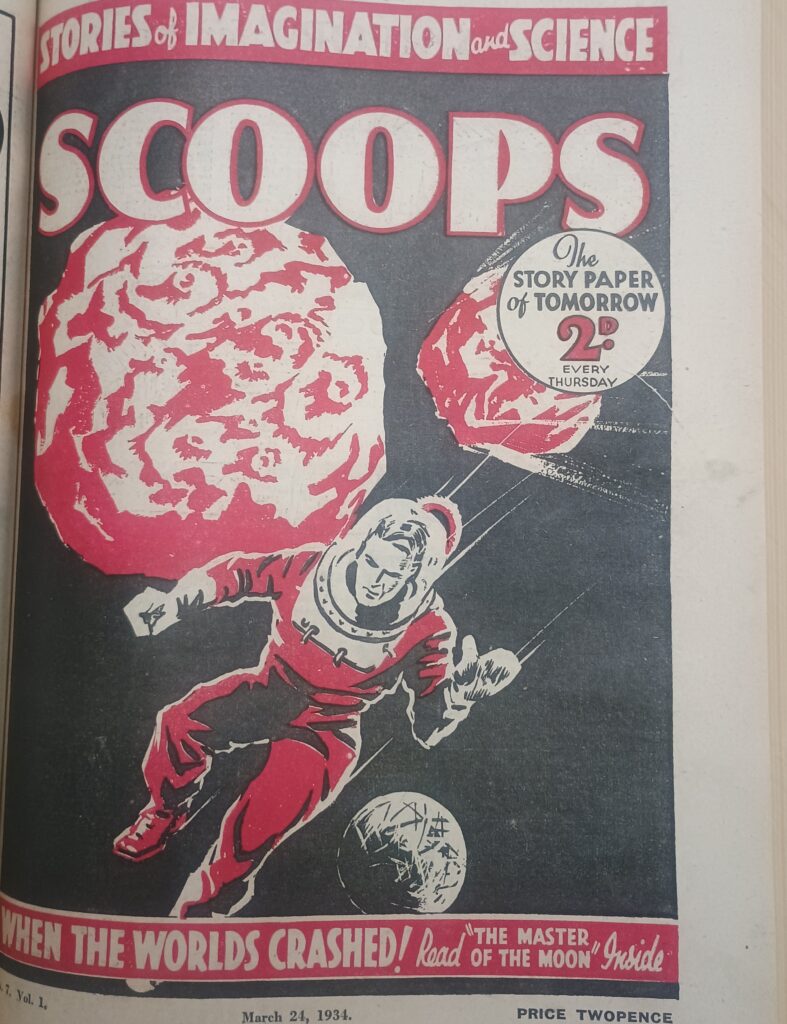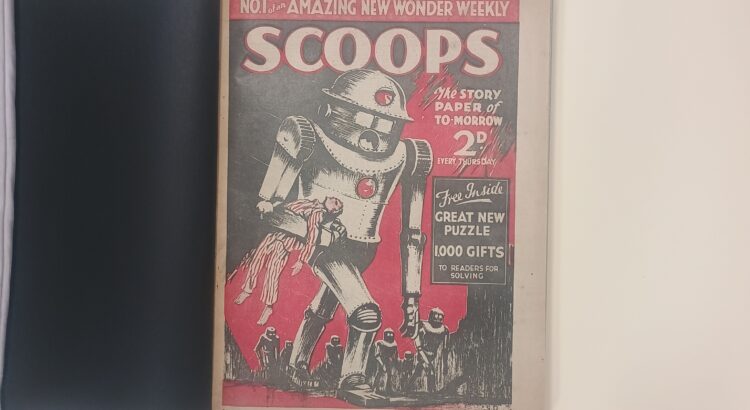We were recently pleased to be able to add a complete run of “Scoops” to the collections. “Scoops” was a weekly published by C.A. Pearson of London from 10th February to 23rd June 1934. It is important because it is considered to be the first British science fiction magazine. Our copies are in almost perfect condition perhaps because they are bound in a suitably space-aged looking metallic silver cover.
“Scoops” was aimed at boys and entered what was then a crowded market for boys’ weeklies. This was the golden age of story papers for children. Story papers are the precursors of comics and featured illustrated text stories. Popular story papers included “The Magnet” which featured the adventures of Billy Bunter at Greyfriars School and “The Wizard” and “Rover” which featured adventure, school and sports stories and were published by D.C. Thomson of Dundee.
“Scoops” offered an alternative to these papers that would “transport its readers from the everyday happenings into the future”. It seemed though that boys preferred school, sports and more traditional adventures stories as it failed to find an audience and was cancelled after only twenty issues.
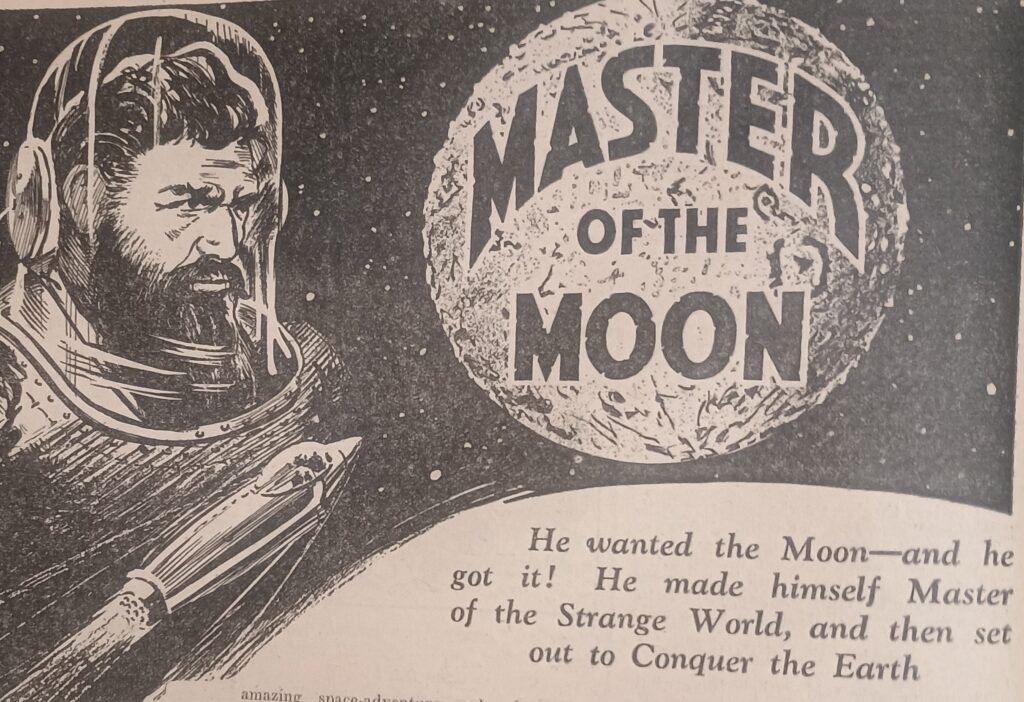
The stories in the paper were largely written by established contributors to boys’ weeklies not science fiction authors. They tended to reuse some even then fairly tired tropes of science fiction such as mad scientists, time travel, giant robots and alien invasion in a way that lacked the sense of wonder that attracted readers to the genre. The paper was edited by Hayden Dimmock, editor of “The Scout” who was surprised to discover that “Scoops” was attracting an adult readership. He attempted to steer the magazine towards a more mature audience and included material by established science fiction writers including John Russell Fearn, but sales did not increase.
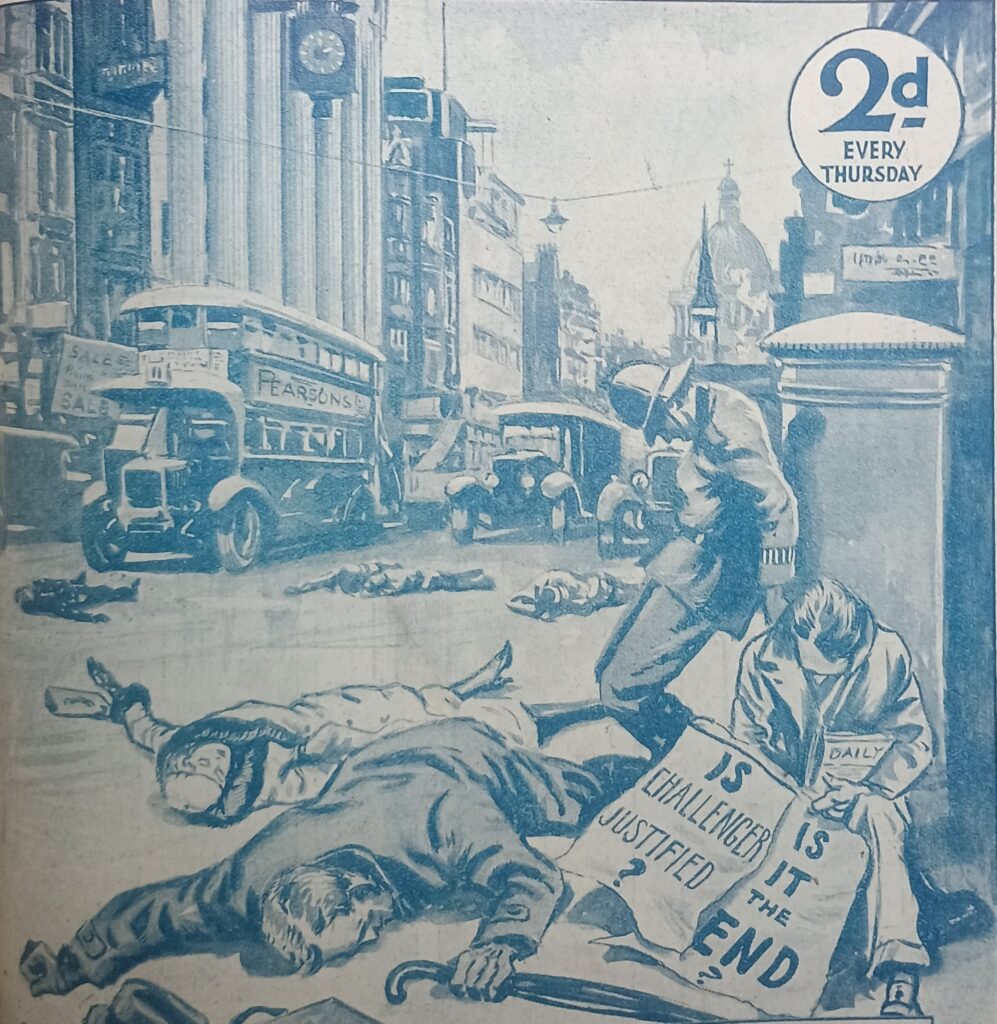
In order to increase sales it reprinted “The Poison Belt” (1913) a science fiction novel by Arthur Conan Doyle as a serial. In this story earth passes through a poisonous ether belt which kills most of mankind. “Scoops” illustrated the story with the above powerful image. If “Scoops” fiction was of mixed quality, its illustrations were striking and are perhaps its most lasting legacy.
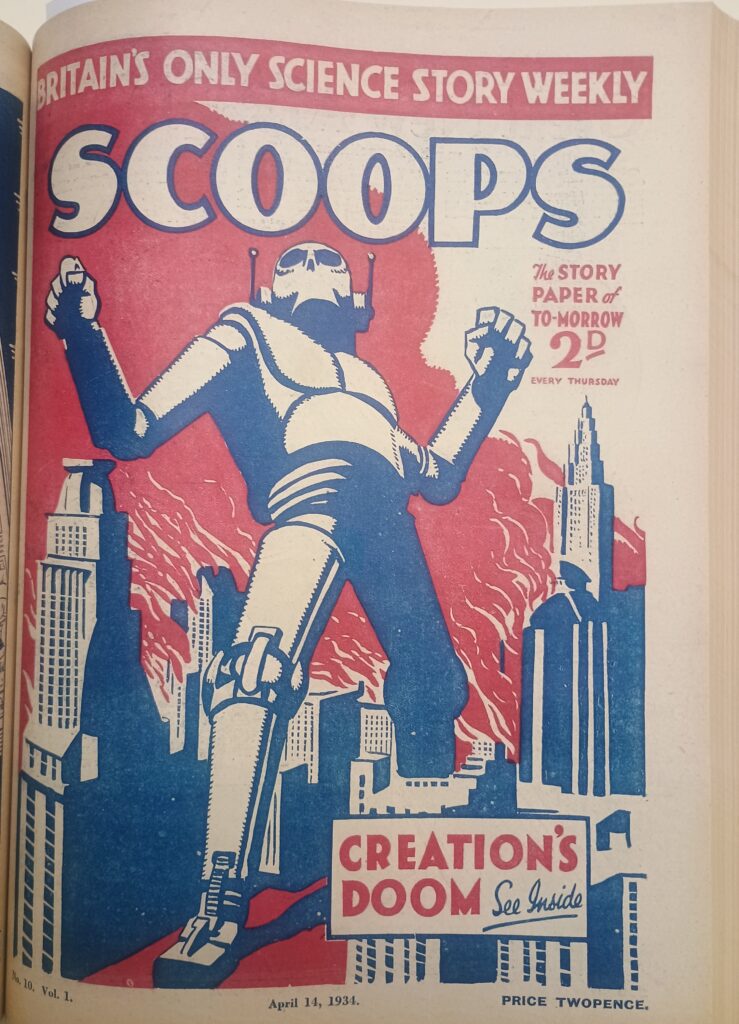
The images of a giant robot, above, and a flying robot below are some of the most powerful illustrations to feature in papers of the period.
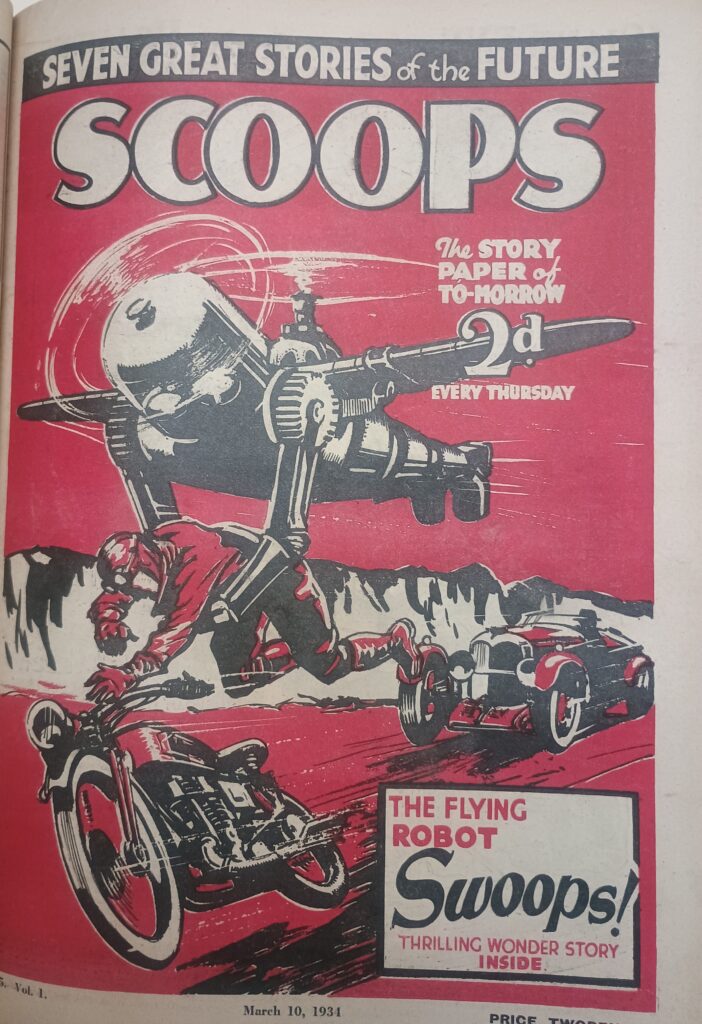
Today we think we live in an age of unprecedented scientific advance but the nineteen thirties was also a time of great change led by new discoveries. “Scoops” reports on scientific advance in an appealingly optimistic way. The editorial in the first issue stated that “Scoops will endeavour to anticipate the marvels of the age in which we live”. It published an article with accompanying images that imagined what a new airport for London on the Thames might be like. It pictured giant futuristic ocean going liners and sky ships and speculated on whether we could communicate with Mars and always suggested that these advances were just around the corner. In the days when British cities were choked by fog it imagined a fog light that would consume the fog it penetrated. Inventions that “Scoops” reported on included roads that melt ice, fireproof paint, sausage skins made of wood and a female robot that could smoke a cigarette. In the illustration below it anticipates the online newspaper, nearly half a century before it became a reality.

You can explore what the future looked like from 1934 in the pages of “Scoops” in our reading rooms. The National Library of Scotland is home to the largest collection of science fiction books and magazines in Scotland and you can travel through time and explore the history and literature of science fiction for free in our collections.
